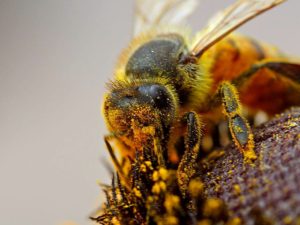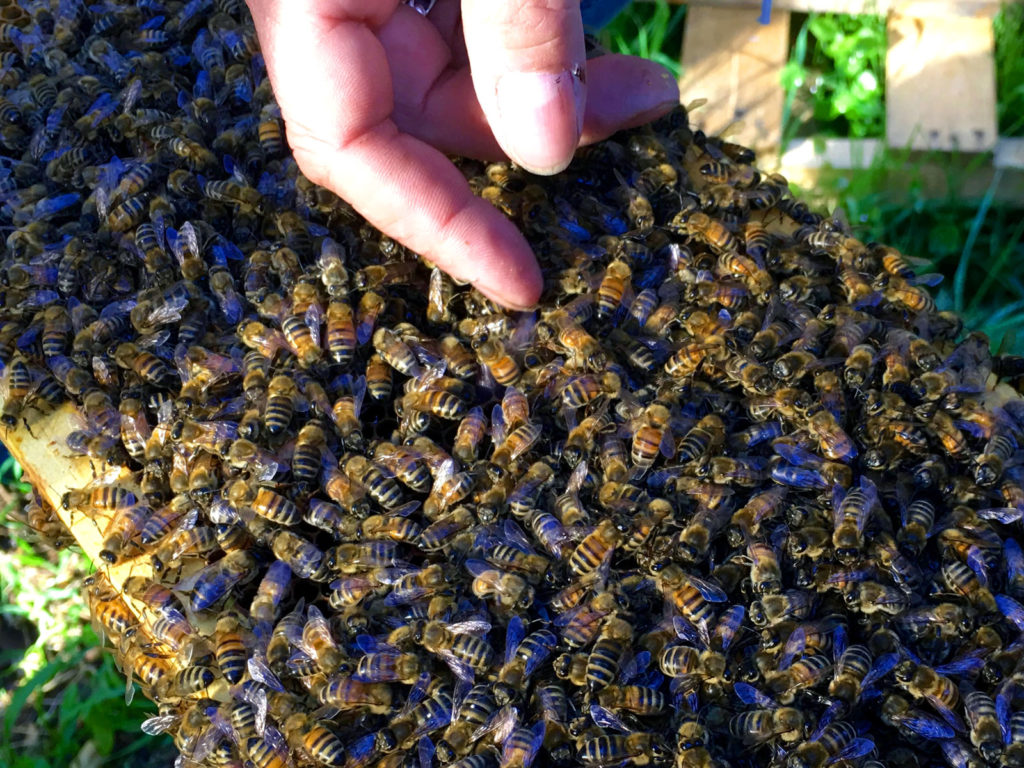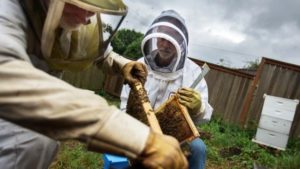Audacious Idea Four: Small Hive Beekeeping
Small Hive Beekeeping
By Tom Seeley
Perhaps my idea is no longer terribly audacious, given the growing interest in “natural beekeeping”, but it is that we embrace

Apis Mellifera collecting pollen
another way of keeping bees besides the standard approach of managing colonies to be 1) as large as possible, 2) as disinclined to swarm as possible, and 3) as productive of honey as possible. Specifically, I am suggesting an alternative approach that enables bees to live more like they do in the wild, and (hopefully) to enjoy the health that I am finding wild colonies possess. I am calling this approach “small-hive beekeeping” for it involves keeping colonies in one deep 10-frame Langstroth hive body for the broodnest and honey stores, along with one shallow super over a queen excluder for the honey crop. This housing arrangement has the following features:
1) the colony occupies a small nest cavity (like in wild colonies),
2) the colony is likely to swarm each summer (as do wild colonies),
3) the colony produces a modest surplus of honey for the beekeeper.
I think this approach will be attractive to beekeepers who do not want to treat their bees for Varroa, do not mind if their bees swarm, and do not seek a vast quantity of honey from each hive of bees.

This approach might also be strongly attractive to beekeepers who are unwilling or unable to invest in an extractor, bottling tank, uncapping knife, and the other equipment needed for extracting honey. For these folks, the honey super could be used to produce comb honey.
I will be testing this approach by creating apiaries managed in this way and seeing what levels of disease and colony mortality I find, and what size honey crops I obtain. As background, I have completed a 6-year study in which I have transferred swarm caught in bait hives into hives consisting of one deep, 10-frame Langstroth hive body with drawn combs, and have then left the colonies alone (no disease treatments, no feeding, no swarm prevention measures, and no honey harvests). I have found that nearly every colony changes its queen each year (probably by swarming), that the Varroa counts in these colonies stay low, and that most (80%) of these colonies survive each year.
Get your tickets – help the bees.




